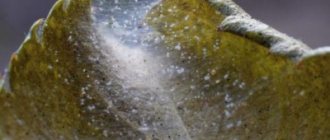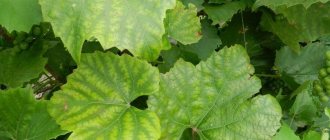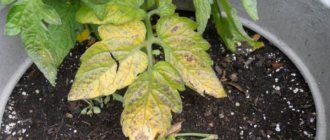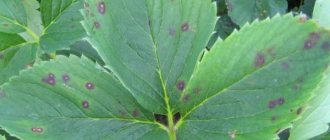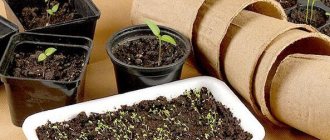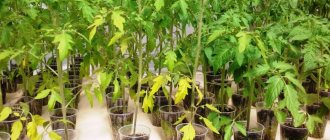The health of pepper seedlings can be judged by the appearance of the plants. There is nothing to worry about if the stems are strong, bushy, the leaves are green and shiny, and there are a lot of flower ovaries (or even flowers). If you see that the leaves on the seedlings are turning pale, you need to find out the cause of the problem. After planting the pepper in the ground, the leaf blade may turn pale, but as soon as the seedlings get stronger and adapt to the new place, the bush will restore color and grow new foliage. There are other more serious reasons for this phenomenon, when urgent measures must be taken to prevent serious damage and preserve the harvest.
Why are the leaves turning pale?
There are several main reasons why the green color of foliage may change.
In seedlings
Many gardeners grow seedlings before transplanting peppers into open ground. There are times when the foliage turns pale and white spots appear on its surface. There are two reasons why this happens most often:
- Deficiency of nutritional components. In order for young seedlings to grow well and be healthy, they must be fertilized regularly. In this case, you need to use both organic and mineral fertilizers. If you do not feed, the foliage will turn pale and begin to wither.
- Lack of space for roots to develop. Some people grow pepper seedlings in small pots. In such containers there is often not enough space for normal growth of the root system, which leads to paleness and wilting of the leaves.
In the greenhouse
The foliage of peppers grown in greenhouse conditions can also turn white. Such problems may appear due to the following reasons:
- Lack of oxygen. Often when growing vegetables inside greenhouses, the plants begin to lack oxygen. This problem occurs due to poor ventilation of the greenhouse structure. To prevent the leaves from turning pale, you need to regularly ventilate the greenhouse.
- Lack of light. Leaves begin to change color and fall off when they don't get enough sunlight. To ensure that vegetables grown in a greenhouse are not in the shade, you will have to install special lamps for additional lighting.
- Excessive watering. Peppers in greenhouses do not need to be watered too often, as this will increase the air humidity. A humid environment promotes the appearance of light spots on the leaves.
Additional Information! Peppers in a greenhouse should be watered no more than three times a week.
In the open ground
Damage to the roots is one of the reasons for the leaves to turn pale
If peppers are grown outdoors, their foliage may become lighter due to the following reasons:
- Lack of heat. Plants grown in open ground often suffer from sudden temperature changes. Especially if they were planted in the garden in early spring. A sharp drop in temperature can lead to lightening and yellowing of leaves.
- Excess of light. Sometimes people use areas of the garden that are always lit to plant peppers. Due to prolonged exposure of plants to sunlight, green foliage gradually begins to lose its original color and wither.
- Root damage. Most often, the root system of seedlings is damaged during transplantation into open ground. If the root veins are severely damaged, the pepper bushes will begin to wither.
Phosphorus
If there is a lack of this element in the soil of peppers:
- leaves fade;
- purple specks appear on the leaves on top;
- purple spots form on the bottom of the leaf blades along the veins;
- the leaves curl into a tube and turn black as they dry out.
Plant degradation due to phosphorus deficiency begins from below.
The most popular phosphorus fertilizers among summer residents are superphosphate and double superphosphate. When applying such fertilizer to seedlings, it is worth remembering that an excess of phosphorus in the soil can cause rapid yellowing and shedding of pepper leaves.
Signs of deficiency and excess of nutrients
The features of the manifestation directly depend on which component is missing:
- Nitrogen. Peppers must be regularly fed with nitrogen-containing fertilizers. If there are not enough of them, the bushes will grow slower, their leaves will turn pale and yellow.
- Phosphorus. If the pepper does not have enough phosphorus supplements, the foliage will acquire a dark shade and begin to curl.
- Potassium. Vegetables need potassium fertilizers. A lack of potassium-containing elements leads to the appearance of bronze dots on the leaves. Over time, the leaves will begin to curl and gradually die off.
- Iron. Iron deficiency leads to chlorosis. Because of this disease, all upper shoots begin to turn pale and die.
Additional Information! An excess of nutrients also has negative consequences. Plants begin to grow quickly, yellow foliage appears.
Potassium
This element is responsible for the division of pepper tissue cells, as well as for the synthesis of some necessary substances. With a lack of potassium, the edges of pepper leaves look burnt. First they turn yellow, then darken and begin to dry out. The plant is not developing well. The leaves look weak and drooping. When there is an excess of potassium, the pepper grows weak new shoots.
Stability: Russians named it the most important factor for living
It will be hot: the Hydrometeorological Center gave a forecast for spring and summer
Continuation of the New Year: Russians’ spending on food has increased sharply
Most often, gardeners use potassium sulfate to replenish potassium reserves in the soil. Also, a lot of this microelement is contained in ash.
Diseases
Late blight is a disease that can cause leaves to turn pale
Sometimes pale spots on the foliage appear due to disease. Common pepper diseases include:
- Late blight. A fungal disease that can significantly reduce yield. When the disease appears, the foliage becomes covered with brown and white spots. If late blight is not treated, fruit damage will begin.
- Fusarium. This is a very dangerous disease that affects blood vessels and clogs them. As a result, the plant’s nutrition is disrupted, which leads to foliage withering.
- Spotted wilt. A viral disease that often appears in vegetables grown in a greenhouse. When spotted wilt appears, pale spots with a purple tint form on the leaves. Over time, spotting may appear on the fruits.
- Cladosporiosis. This disease often affects greenhouse peppers that are grown in high humidity conditions. The main symptom of cladosporiosis is leaf spotting. It first appears on the lower leaves. Over time, the spots spread throughout the plant.
Calcium
This microelement is responsible for the plant’s ability to absorb nutrients, the development of the root system, and immunity. In case of shortage:
- leaves curl down;
- the leaves become covered with light spots, which gradually become brown, dry out and crumble.
In this case, you can use, for example, calcium nitrate as a fertilizer. But you need to keep in mind that excess calcium in the soil will lead to the appearance of spots along the veins of the plants.
Prevention
Pruning affected shoots is a procedure that helps prevent the spread of spotting
There are several preventive measures that will help prevent the appearance of pale spots on foliage:
- Seed disinfection. It is recommended to treat all seed before planting it in open ground. This will reduce the likelihood of the appearance and development of many diseases.
- Preventive spraying of greenhouses and plants. This treatment is needed to get rid of disease carriers.
- Pruning branches. All affected plant branches must be pruned and burned in a timely manner. After pruning, all tools used must be disinfected with a one percent solution of potassium permanganate.
- Remove weeds in a timely manner. Weeds are one of the main causes of pepper diseases. Therefore, the area must be weeded and cleared of grass in a timely manner.
Copper
This element is necessary for metabolic processes and respiration of pepper. With its deficiency, plants become lethargic. The leaves fade to almost white. First of all, when there is a lack of copper in plants, the upper leaves and new shoots die.
As for fertilizers, if such a problem occurs, you can use, for example, Controlfit Copper. When there is an excess of copper in plants, the lower part is damaged - the leaves become brown and wither. Gradually the damage spreads higher and higher.
Adding Fertilizers: Helpful Tips
Bird droppings are an ideal organic vegetable food.
There are several general rules for using fertilizers that you should familiarize yourself with before fertilizing peppers:
- you need to regularly use both mineral fertilizers and organic matter;
- when using several types of feeding mixtures, you need to ensure their compatibility;
- You cannot add too much fertilizer to avoid oversaturation of the soil with nutrients;
- all fertilizers must be distributed evenly, having previously divided the area into squares;
- It is better to fertilize peppers after watering the rows with a corrugated hose.
Important! Peppers should not be fed several weeks before harvesting a ripe crop.
Blanching of pepper foliage is a common problem that most often occurs due to improper feeding. Therefore, before planting peppers, you must definitely figure out what to do so that the leaves do not turn pale.
Iron
Iron ensures the processes of photosynthesis, metabolic processes, and oxidation in pepper tissues. In case of shortage:
- young pepper leaves begin to turn yellow from the edges to the center (the veins remain green);
- yellowed areas die and crumble;
- the plant dies.
Yellowing of leaves due to iron deficiency is called chlorosis. Iron chelate can help plants in this case.
Excess iron in the soil leads to plant degradation, starting from the top. Therefore, you should not add too much iron chelate to the soil.
Unlikely to become friends: the dog reacted violently to the meeting with the robot dog (video)
“Manizha associates himself with a Russian woman”: Masha Katz stood up for Manizha
A stray dog showed up at a bachelor party and found a home for herself and 7 puppies
Treatment options
If the leaves have already changed their color, simply feeding the plantings will not be enough. It is necessary to establish exactly what element is missing in the soil, what fungus caused the disease. Since the symptoms of the pathologies are similar, it is almost impossible to establish a “diagnosis” by eye. But this is often not required; it is enough to determine the group of the disease in order to choose adequate therapy.
In the early stages of the lesion, Bordeaux mixture is effective. It will also be a good means of prevention at the stage before planting. If there is no ready-made solution, it can be made from copper sulfate, quicklime and water at room temperature in quantities of 100 and 240 grams, 10 liters, respectively. If the lesions are serious and treatment was not carried out on time, you can reduce the amount of fluid to 7 liters.
On a note!
Bordeaux mixture is equally effective in combating bacteria and fungi, as well as parasites, but requires precise dosage of components. It is especially important to avoid copper overdose.
Before planting, you need to treat the area, fertilize it and add the necessary biologically active components, for example, Alirin-B. 1 tablet is dissolved in 5 liters of clean water. Spray the soil a few days before planting; the specified amount is enough for a square of 5 meters. If last season the area was already affected by a fungal disease, pour a small amount of solution into the hole immediately before planting the seedlings. This is effective in combating septoria and similar pathologies.
You may be interested in:
Diseases of sweet peppers and the fight against them Sweet peppers are one of our favorite vegetables grown everywhere. But growing a good pepper is not at all easy, it...Read more...
Already grown bushes are sprayed with biologically active preparations, such as Quadris or Trichodermin. The solution is used to treat plants, including those with flowers and fruits. The substances penetrate the tissue structure and strengthen them, stimulate photosynthesis and other metabolic processes, and literally strengthen the pepper’s immunity. This measure is especially effective in the fight against powdery mildew.
After landing in the ground
10-14 days after planting the seedlings in the ground, carry out the third feeding. For this purpose, both mineral and organic fertilizers are used.
After transplantation, it is imperative to water with Atlet or Kornevin preparations.
Mineral
Peat oxide. Stimulates plant growth, increases productivity by 25%, and promotes adaptation to a new place. The product is used for watering. Working concentration – 1%.
- Superphosphate + urea are used during the period of increasing vegetative mass. For the solution, take 10 g of urea and 5 g of superphosphate for every 10 liters of water. The solution consumption is 1 liter for each plant.
- Borofoska (you can take boric acid). Boron is necessary for pepper during flowering. Borofoska is diluted according to the instructions, boric acid is taken at the rate of 6 g per 10 liters of water. Application – spraying the above-ground parts of the plant.
- Calcium nitrate , which prevents the development of blossom end rot. Recommended before and after fruit formation. For the solution, dilute 20 g of the product per 10 liters of water.
Organic
The first remedy for caring for pepper seedlings transplanted into the ground is considered to be an ash solution. First, prepare a concentrate, for which take 1 tbsp for every 2 liters of water. wood ash. The advantage of this product is that it can be used for root and foliar feeding.
In addition to the solution, you can use dry ash to dust plants and soil.
After planting in the ground and before flowering, an infusion of:
- 0.5 buckets of compost;
- 100 g wood ash;
- 1 tsp potassium sulfate;
- 2 tsp superphosphate.
Everything is diluted in a bucket of water and used for watering.
How to feed pepper seedlings before picking
According to the gardens, peppers should be replanted. This supports the development of the pepper's roots and stem. To do this, we prepare the soil for planting and fertilizing.
Namely:
- superphosphate 1 1.5 kg;
- ammonium nitrate 600-800 g;
- potassium chloride 800 g.
The share of fertilizer is given per 1 cubic meter. m of soil. If the transplant is carried out in a peat mixture, then 1 kg of calcium chloride will be required, and 4 to 8 kg of ammonium nitrate. Fertilizers are mixed with soil. After this, a container is taken, filled with a substrate of soil and fertilizers, and transplantation is carried out.
How to feed pepper seedlings with vermicompost infusion, how to prepare a solution
Vermicompost is one of the best fertilizers. It is obtained by processing organic residues by worms. Its nutritional properties are superior to manure and compost. Moreover, this fertilizer comes in both liquid and dry form. For seedlings in pots and garden beds, liquid is preferable.
Fertilizer solution can be prepared from:
- concentrate;
- dry vermicompost.
In the first case, everything is quite simple. We take the concentrate and dilute it according to the instructions on the package. Afterwards we water the plants. To prepare a solution from dry vermicompost, you need to take a glass of the latter and soak it in five liters of warm water. After this, let it sit for a day. After time, the infusion can be used. Afterwards, the seedlings are watered with the resulting solution, diluting a liter of vermicompost in 10 liters of water. It has a beneficial effect on the development and growth of plants, and also improves the soil, and the effect of vermicompost lasts for 5 years.
What microelements do pepper seedlings need for a good harvest?
Pepper is a rather unpretentious plant. But still, it also needs to be fed with microelements, especially if the soils are poor in them.
Bell peppers can be fertilized with the following elements:
- nitrogen for good growth;
- superphosphate;
- potassium;
- iodine;
- phosphorus;
- calcium.
All of these additives help to grow strong seedlings and get a rich harvest.

